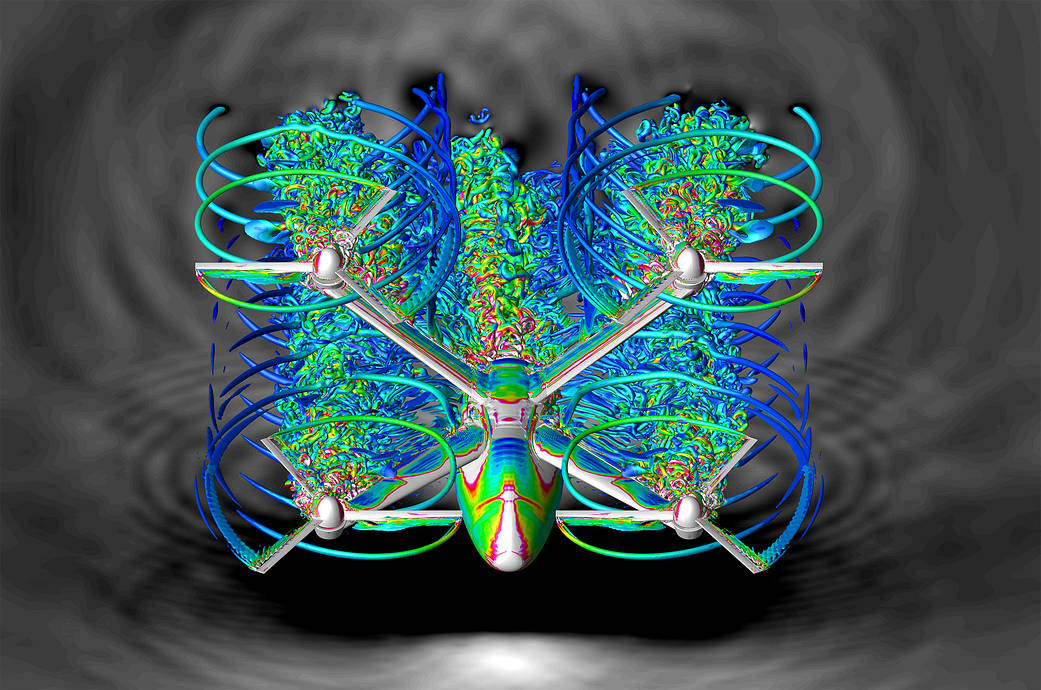As NASA continues to work with its many partners in enabling Advanced Air Mobility – where everything from small package-delivery drones to passenger-carrying air taxis are able to operate safely over cities and countryside alike – the agency’s aeronautical innovators are considering how well some of those future vehicles might fly. In this image, a concept for a six-passenger quadcopter is run through a computer simulation to visualize the interaction of airflow among the four rotors. Among the design goals are to minimize the interaction between the front and rear rotors, while keeping an efficient and compact configuration. The background shows the pressure oscillations, where white is high and black is low. To create this visualization the Pleiades and Electra supercomputers at NASA’s Ames Research Center in California were used to process the hundreds of millions of data points that are the result of four three-bladed rotors rotating and slightly flexing as they do. For the more technically minded, the supercomputers were powered by up to 3,000 Intel Xeon Broadwell, Ivy Bridge, and Skylake processors and used NASA’s OVERFLOW computational fluid dynamics code.
1 min read


































